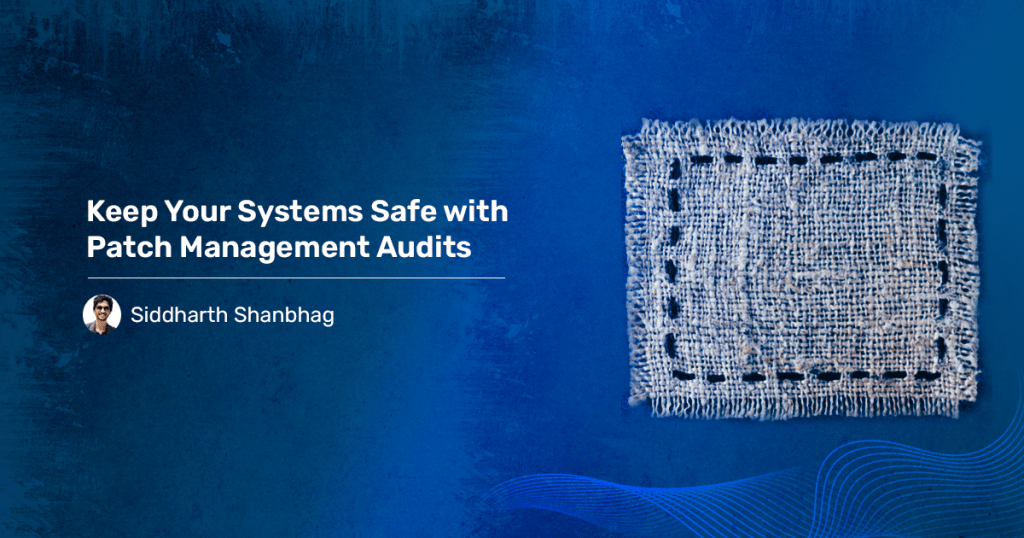Picture yourself cruising down the highway, engine humming, cool breeze passing by, everything just clicking. Now, here’s the catch: neglect the routine care your car needs, like oil checks, tire rotations, and other mechanical inspections. Boom! Your smooth ride can quickly turn into a not-so-pleasant surprise. That’s the essence of regular maintenance, and in the world of IT, it’s Patch Management Audit – ensuring a smooth digital journey.
Patch Management is the process of scanning your IT infrastructure for missing updates called “patches” and fixing them by applying necessary patches. This process can be easily executed through a patch management tool that lets you easily remediate vulnerabilities before they get exploited. However, just as your car and bike need periodic maintenance, your patch management requires periodic audits.
Patch Management Audit Checklist
- Examine your Patch Management Strategy:
Your Patch Management Strategy should align with the security objectives and compliant requirements of your organization. For example, a bank dealing with sensitive customer data may prioritize patches that address vulnerabilities that can affect data integrity and confidentiality. A powerful patch management tool can make it easy to streamline policy enforcement, also ensuring your policy remains up to date. - Inventory all Network Assets:
Your company might have hundreds of IT assets, including laptops, servers, applications, and remote devices. The first step is to inventory all network assets so you get an idea of the scope of the patching operation. The inventory should be updated regularly as part of the patch management process. - Vulnerability Assessment:
Conduct regular Vulnerability Assessments to identify and prioritize vulnerabilities. Also, ensure that your organization has a process to address critical vulnerabilities promptly. - Analyze your Patch Management Process:
You need tools that provide real-time information about vulnerabilities, support automation, and integrate seamlessly with your assets. A comprehensive patch management solution can enhance your cybersecurity capabilities while securing and updating your systems. - Establish Patching Priorities:
Patches should be prioritized based on exposure and risk vulnerability. You can prioritize vulnerabilities based on the questions depending on your business/organization. Establish personnel that have the authority to decide the urgency of patching activities. - Always Test Patches:
The patches will be designed to work well in isolation, but in the real world, there are many computers software. This means that a patch that works perfectly in one’s computer software may be incompatible with another computer software. When deploying patches without properly testing them, it might lead to a huge risk if one of the patches conflicts and causes issues in the company’s infrastructure. - Generate Patch Reports:
Document all the patching efforts to meet regulatory compliance and to provide transparency in your work. Effective reporting can also help to pinpoint certain issues that will help the team avoid mistakes in the future. Create deep documentation and detailed reports about patch download, testing, and auditing for auditing and compliance.
The Purpose of Patch Management Audit
After completing a Patch Management Audit, an organization will have all the necessary information required to improve its patching process. This data can reveal issues that prevent efficient patch management processes.
Benefits of Auditing a Patch Management Process
- Identify & Resolve Blockers: Every organization out there that follows patch management best practices runs into blockers. A thorough patch management helps organizations identify and resolve the blockers in the patching process.
- Reduces Security Risks: Once the Patch Management Audit is completed, it ensures that the organization’s patching process provides the necessary IT security for a business.
- Compliance Standards: During an Audit, the IT team of an organization can make sure that they are following all compliance standards.
- Collect Relevant Data: When a patch management issue occurs, it is helpful to have data from audits to refer to and use. This is also a reason to keep documentation of previous patch management audits on hand.
Conclusion
In conclusion, following this and using an effective patch management tool will drastically improve your organization’s patch management process, just as regular maintenance ensures a smooth vehicle. Regular patch management audits play a crucial role in ensuring that vulnerabilities are promptly addressed, reducing the risk of security breaches.


